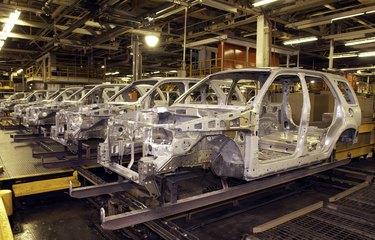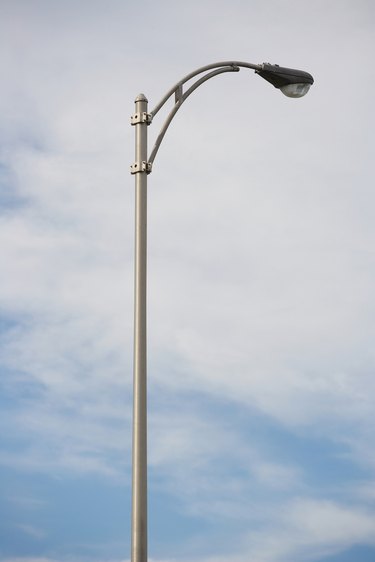
When metal goes unprotected, the effects can be disastrous. Entire structures like buildings and bridges can collapse without warning. Galvanizing a metal offers crucial protection from harmful physical elements, such as rust and corrosion. Metal products are "galvanized" when a layer of zinc is applied to their outer surface. Both electrogalvanization and hot dipped galvanization are methods of achieving this property. There are, however, notable differences in the two processes and their advantages.
Electrogalvanization
Video of the Day

Electrogalvanization starts by submerging raw metal into an electrolytic solution. An electrically charged anode composed of pure zinc is placed into the solution. Current flows from the zinc anode, through the solution, and into the metal cathode. Tiny particles of zinc are dissolved in the electrolytic solution and bond to the surface of the metal. This results in the material having a thin coating of protection, but produces a shiny finish for cosmetic appeal.
Video of the Day
Hot Dip Galvanization

Hot dip galvanization requires raw metal to be cleaned in a caustic solution to remove impurities and scale on the surface. The material is rinsed and a non-oxidizing flux compound is applied. The metal is immersed in a molten zinc bath at a temperature between 443 to 465 degrees Celsius (830 to 870 degrees Fahrenheit). A chemical reaction between the zinc and the iron in the metal bonds a layer of pure zinc to the outer surface of the metal. Hot dip galvanization yields a strong, thick coating but generally has a dull gray finish.
Performance

Manufacturers galvanize products in different ways to accommodate their intended purpose. Building materials designed for structural support are commonly hot dipped to ensure their durability and longevity. Products that are easily replaceable, like outdoor furniture and gardening tools, are more likely to be electrogalvanized. Additional techniques have proven themselves worthwhile in extending the life of a galvanized metal. For example, including a coat of paint has a synergistic effect that offers double the protection value that each would provide alone.
Considerations
As a consumer, there are key factors to consider when choosing between electrogalvanized and hot dip galvanized products. Evaluate the physical location that the product will inhabit. Prolonged exposure to direct sunlight, moisture and fallen debris from overhead trees will promote the effects of corrosion. Determine the item's purpose. An ornamental item would not require the same level of protection as that of a structural item. Comparing similar products, be prepared to spend two to three times more money for hot dip galvanized, but rest assured that it will better withstand the test of time.